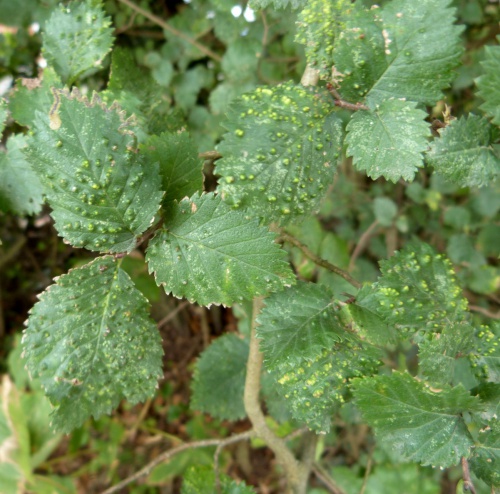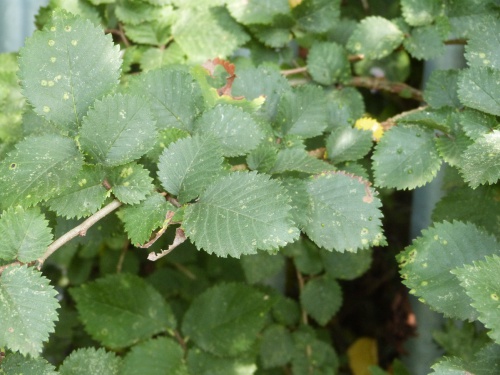English Elm - Ulmus procera
Large suckering domed tree to 30 metres, but rarely reaching maturity in Britain since the ravages of Dutch Elm Disease. Bark cracks into squares and branches have corky ridges. Leaves have 10 to 12 pairs of lateral veins. Flowers in small clusters appearing before the leaves. Fruits rounded 10 to 17 mm winged with seed above the middle.
Either obtain confirmation from a County Recorder before submitting a record, or submit detailed images showing key features. We recommend that you take and retain a specimen; the County Recorder may wish to see this for confirmation.
Common within its range in hedgerows. Rare in woodland.
March to April.
Deciduous. Can become quite common in some hedgerows often reaching the size of a small tree when it usually dies, having already produced suckers that become the next generation.
Common in southern and central England, scarcer further north.
Quite common in Leicestershire and Rutland. In the 1979 Flora survey of Leicestershire it was found in 525 of the 617 tetrads.
Leicestershire & Rutland Map
Enter a town or village to see local records
MAP KEY:
Yellow squares = NBN records (all known data)
Coloured circles = NatureSpot records: 2020+ | 2015-2019 | pre-2015
UK Map
Species profile
- Common names
- English Elm
- Species group:
- Trees, Shrubs & Climbers
- Kingdom:
- Plantae
- Order:
- Rosales
- Family:
- Ulmaceae
- Records on NatureSpot:
- 3
- First record:
- 07/09/2019 (Nicholls, David)
- Last record:
- 14/08/2020 (Calow, Graham)
Total records by month
% of records within its species group
10km squares with records
The latest images and records displayed below include those awaiting verification checks so we cannot guarantee that every identification is correct. Once accepted, the record displays a green tick.
In the Latest Records section, click on the header to sort A-Z, and again to sort Z-A. Use the header boxes to filter the list.



